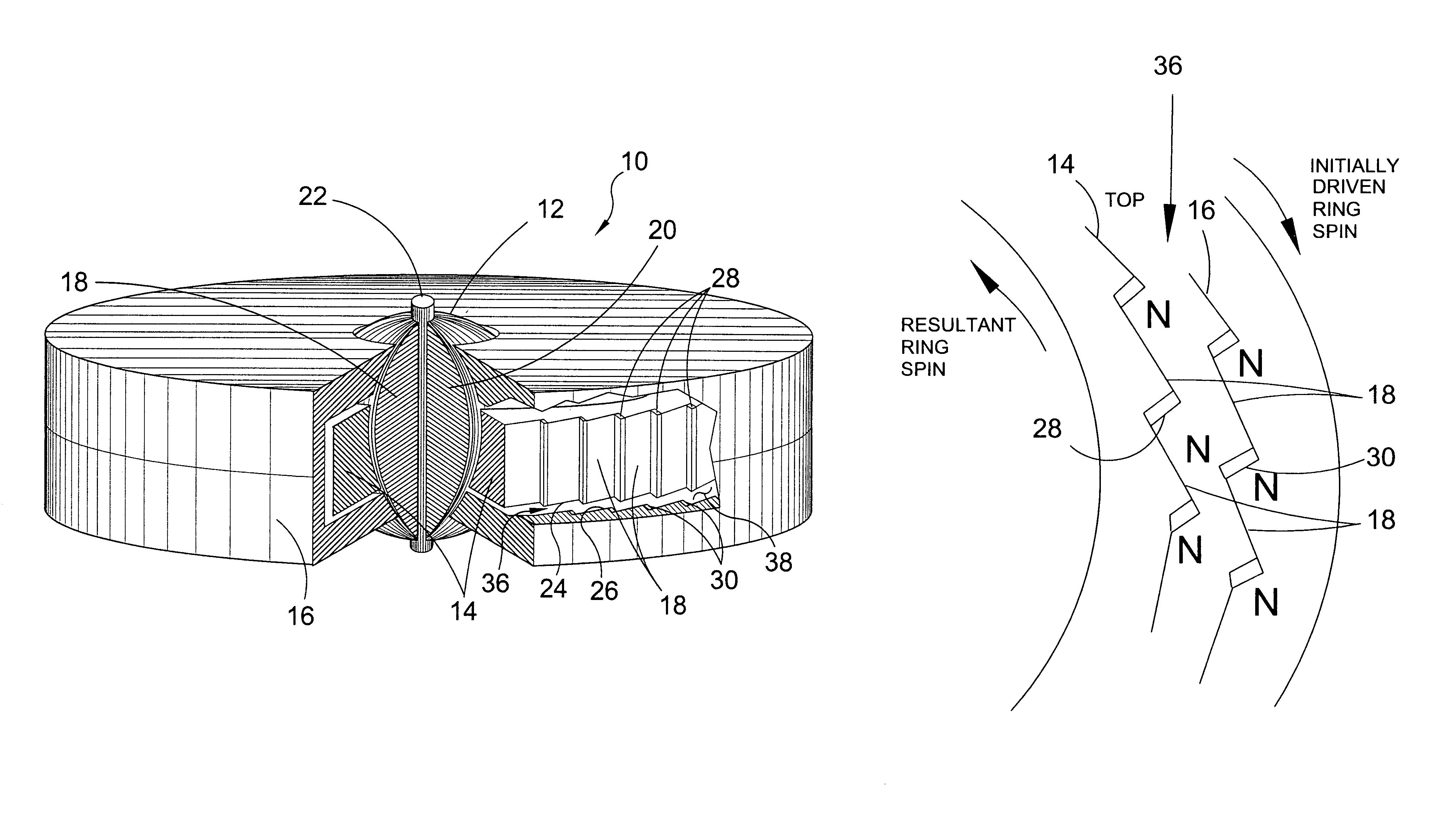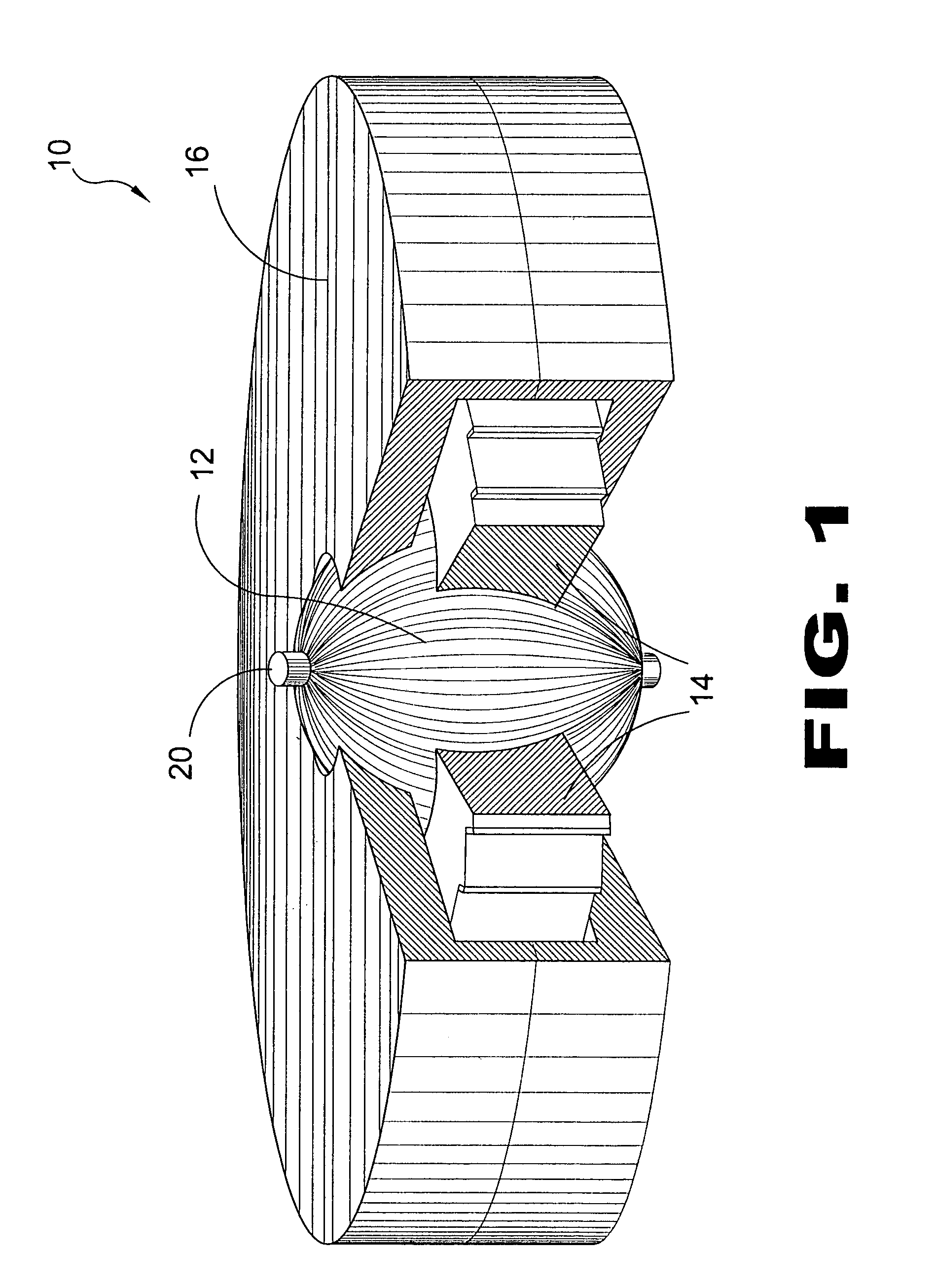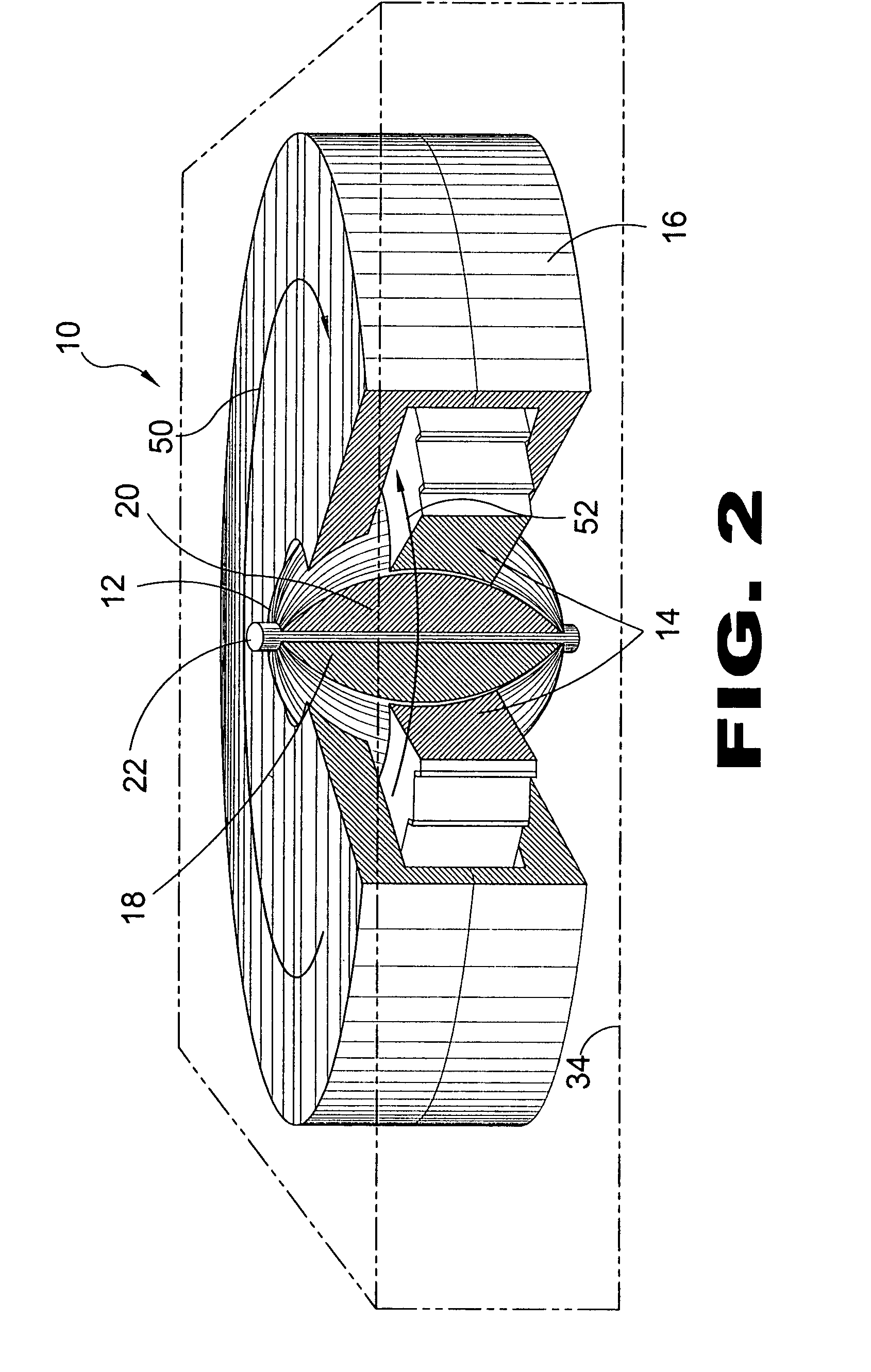Magnetic field generating device
- Summary
- Abstract
- Description
- Claims
- Application Information
AI Technical Summary
Problems solved by technology
Method used
Image
Examples
Embodiment Construction
[0041]In order that the invention may be more fully understood, it will now be described, by way of example, with reference to the accompanying drawing in which:
[0042]FIG. 1 is a cut-away perspective view of the present invention 10 having a solid conductive sphere 12. The present invention 10 is an anti-gravitational generator comprising a central sphere 12 surrounded by an inner ring 14 within an outer ring 16, rotating about a vertical axis. A spherical core 12 is comprised of a core of conductive material and dielectric material insulated from outer engine casing, the outer surface is conductive / dielectric lines running vertically from pole to pole. Around the core 12 is an inner ring 14 that spins in one direction, looking from the top, counterclockwise, it is charged in one direction through brushes. An outer ring 16 placed around the inner ring 14 will spin in the opposite direction, clockwise and will be charged with an opposite flow of electricity through the brushes. Beari...
PUM
 Login to View More
Login to View More Abstract
Description
Claims
Application Information
 Login to View More
Login to View More - R&D
- Intellectual Property
- Life Sciences
- Materials
- Tech Scout
- Unparalleled Data Quality
- Higher Quality Content
- 60% Fewer Hallucinations
Browse by: Latest US Patents, China's latest patents, Technical Efficacy Thesaurus, Application Domain, Technology Topic, Popular Technical Reports.
© 2025 PatSnap. All rights reserved.Legal|Privacy policy|Modern Slavery Act Transparency Statement|Sitemap|About US| Contact US: help@patsnap.com



